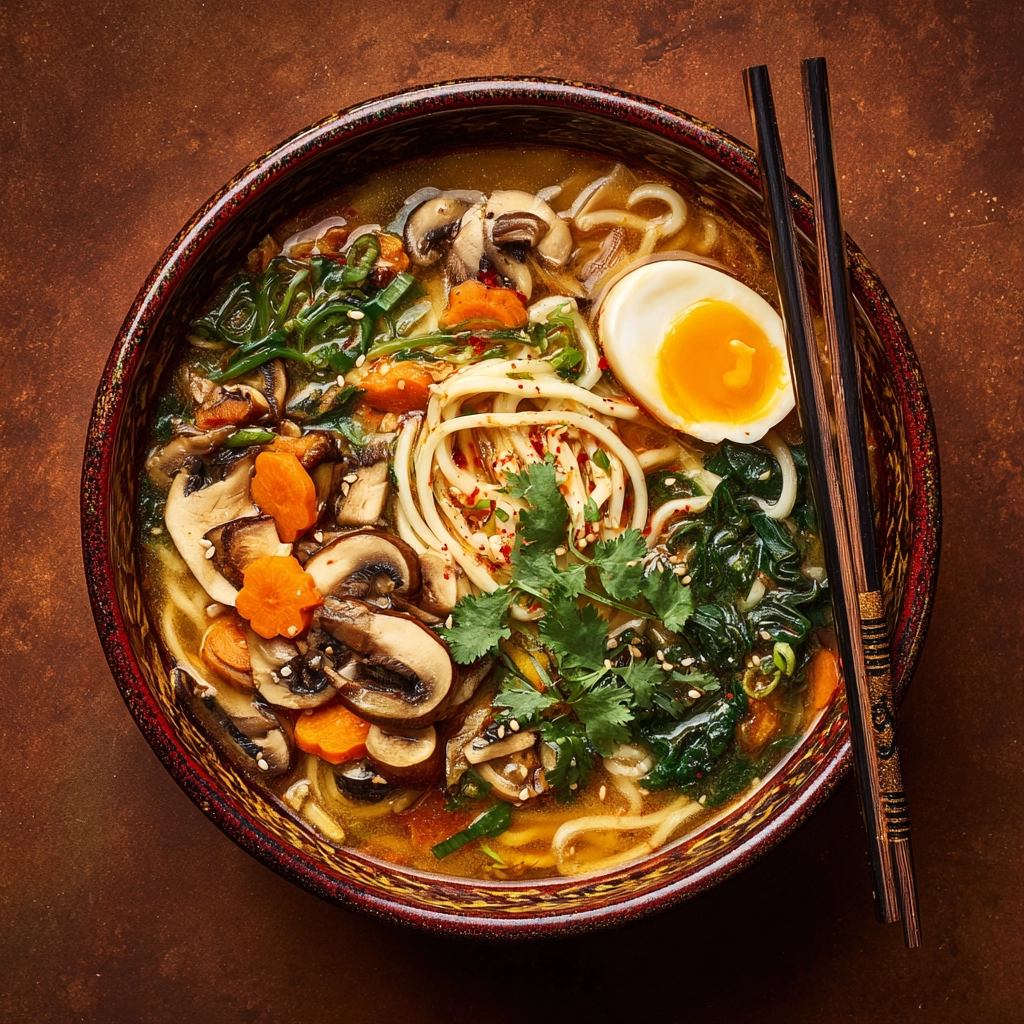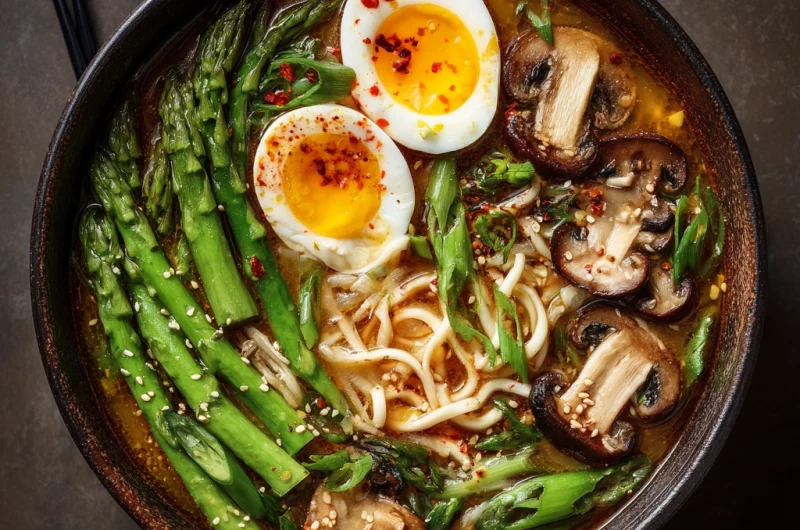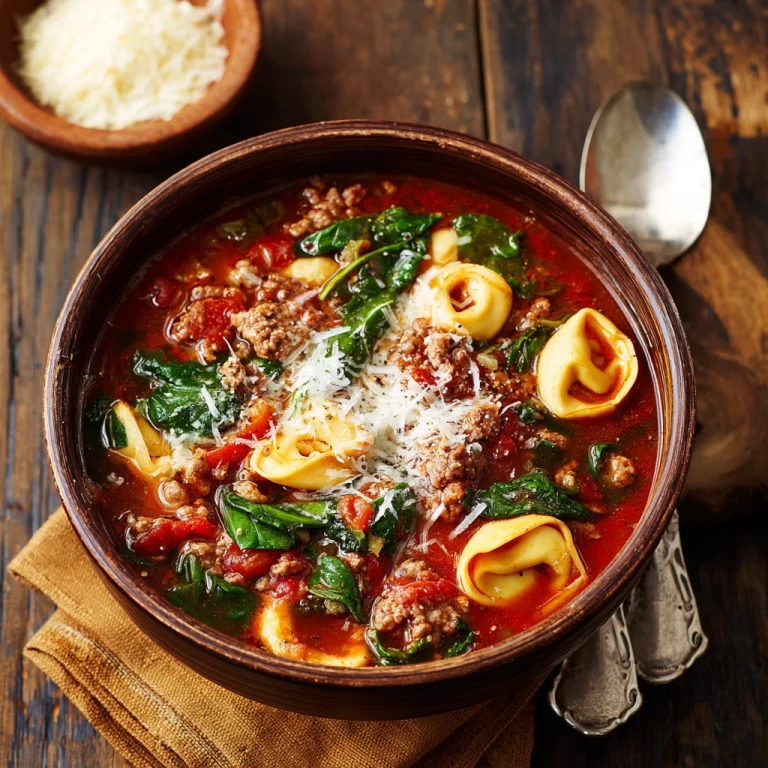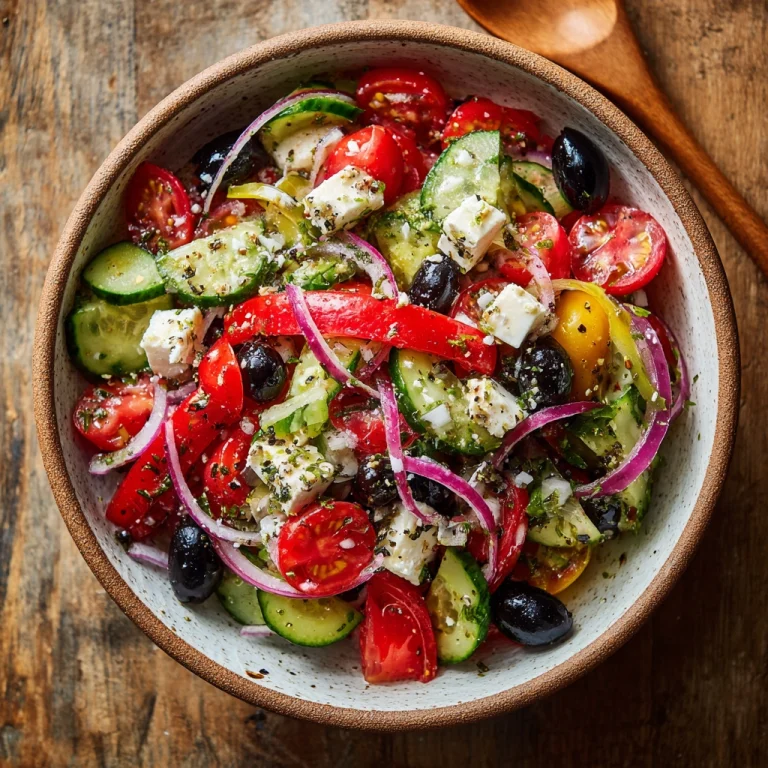Noodles Miso Soup
A steaming bowl of Noodles Miso Soup feels like instant comfort — warm, nourishing, and deeply satisfying. The delicate umami flavor of miso, the heartiness of noodles, and the aroma of fresh vegetables come together to create a soul-soothing meal that’s simple yet incredibly flavorful. In Japan, miso soup is more than just food — it’s tradition. It’s often enjoyed as part of everyday meals, from breakfast to dinner, and is celebrated for its ability to balance nutrition and taste in one bowl.
When combined with noodles, it becomes a heartier, more filling dish that can stand on its own. Whether you’re craving a quick weeknight dinner, a cozy lunch, or a light but fulfilling meal, Noodles Miso Soup delivers both nourishment and comfort. It’s rich in protein, antioxidants, and probiotics, thanks to the fermented miso paste — making it not just delicious but also wonderfully good for your gut and overall wellness.

Ingredients Needed
| Ingredient | Amount | Calories (Approx.) |
|---|---|---|
| Miso paste (white or red) | 3 tbsp | 60 |
| Noodles (ramen, udon, or soba) | 6 oz | 210 |
| Vegetable broth (or dashi for authentic flavor) | 4 cups | 40 |
| Tofu, cubed | ½ cup | 90 |
| Green onions, chopped | 2 | 10 |
| Mushrooms (shiitake or button), sliced | 1 cup | 30 |
| Spinach or bok choy | 1 cup | 20 |
| Soy sauce | 1 tbsp | 10 |
| Sesame oil | 1 tsp | 40 |
| Garlic, minced | 2 cloves | 8 |
| Ginger, grated | 1 tsp | 5 |
Step-by-Step Cooking Instructions
1: Cook the Noodles
In a medium pot, cook your noodles according to package directions. Drain and set aside. You can use ramen, udon, or soba depending on your texture preference.
2: Sauté Aromatics
In a large saucepan or wok, heat sesame oil over medium heat. Add minced garlic and grated ginger, and sauté for about 30 seconds until fragrant. This base adds warmth and depth to your soup.
3: Add Vegetables and Broth
Add mushrooms and cook for 3–4 minutes until they soften. Then pour in the vegetable broth (or dashi) and bring to a gentle simmer. Add tofu cubes and leafy greens like spinach or bok choy.
4: Prepare the Miso Paste
In a small bowl, whisk miso paste with a ladleful of warm broth until smooth. This prevents clumping and preserves the miso’s beneficial probiotics. Stir the mixture back into the soup off the heat to avoid overcooking.
5: Combine and Season
Add cooked noodles to the pot. Stir gently and season with soy sauce. Taste and adjust saltiness or add a dash of chili oil if you like some heat.
6: Serve and Enjoy
Ladle the soup into bowls, garnish with green onions, and serve immediately. Each spoonful offers savory, earthy, and comforting flavors that warm you from the inside out.
Tips for Customizing the Recipe
- Choose your noodles wisely: Ramen adds chewiness, udon gives a soft bite, and soba offers a nutty flavor.
- Protein options: Add grilled chicken, shrimp, or a soft-boiled egg for extra protein.
- Go vegan: Use vegetable broth and skip any fish-based dashi. Miso paste is naturally vegan unless stated otherwise.
- Add spice: Stir in chili flakes, sriracha, or spicy miso paste for a kick.
- Boost the veggies: Try adding carrots, bean sprouts, or edamame for texture and nutrients.
- Depth of flavor: Mix white and red miso for a richer, more complex taste.

Nutritional Information (Per Serving)
| Nutrient | Amount |
|---|---|
| Calories | 250 kcal |
| Protein | 10 g |
| Carbohydrates | 32 g |
| Fat | 9 g |
| Fiber | 3 g |
| Sodium | 620 mg |
| Vitamin A | 25% DV |
| Iron | 12% DV |
Serving Suggestions
- Garnish with toasted sesame seeds, chopped scallions, or nori strips for authentic Japanese flair.
- Serve alongside vegetable tempura, gyoza dumplings, or a light seaweed salad for a balanced meal.
- For a cozy dinner, pair it with green tea or matcha latte for a calming, complete experience.
- Add a soft-boiled egg for extra creaminess and texture.
Noodles Miso Soup
4
servings10
minutes15
minutes148–150 calories per bowl
kcalIngredients
IngredienttQuantitytCalories (approx.)
Miso paste (white or red)t3 tbspt90
Vegetable or chicken brotht4 cupst40
Soy saucet1 tbspt10
Sesame oilt1 tspt40
Fresh ginger, gratedt1 tspt2
Garlic, mincedt2 clovest8
Noodles (ramen, soba, or udon)t6 ozt210
Tofu cubes (optional)t½ cupt90
Green onions, slicedt2 tbspt4
Baby spinach or bok choyt1 cupt10
Mushrooms (shiitake or button)t½ cupt20
Soft-boiled egg (optional)t1t70
Directions
- Prepare the Noodles:
- Cook noodles according to package instructions. Drain, rinse under cold water, and set aside.
- Make the Broth Base:
- In a large pot, heat sesame oil over medium heat. Add garlic and ginger, sauté until fragrant (about 30 seconds).
- Add Vegetables & Broth:
- Pour in broth and bring to a simmer. Add mushrooms and cook for 5–6 minutes until tender.
- Whisk in the Miso Paste:
- Remove ½ cup of hot broth, whisk it with the miso paste in a small bowl until smooth, then return it to the pot. Stir gently—avoid boiling the soup after adding miso.
- Add Noodles & Greens:
- Add the cooked noodles, tofu (if using), and spinach or bok choy. Stir until warmed through.
- Season & Serve:
- Add soy sauce to taste. Ladle into bowls and top with sliced green onions and a soft-boiled egg if desired.
Recipe Video
Notes
- Choose your miso wisely: White miso (shiro miso) has a mild, slightly sweet flavor, while red miso (aka miso) is deeper and saltier. For a balanced soup, try mixing the two!
Don’t boil the miso: Always add miso paste after removing the pot from heat. Boiling it destroys its delicate flavor and beneficial probiotics.
FAQs
1. What kind of noodles work best for Noodles Miso Soup?
You can use any type of noodles you like! Traditional choices include ramen, udon, or soba noodles. Ramen noodles give a springy texture, udon offers a soft and chewy bite, while soba (made from buckwheat) adds a subtle nutty flavor.
2. Can I make Noodles Miso Soup vegetarian or vegan?
Yes! Simply use vegetable broth instead of dashi (which often contains fish flakes) and choose a vegan-friendly miso paste. Add tofu, mushrooms, and extra vegetables for a satisfying, plant-based meal.
3. When should I add miso paste to the soup?
Add miso paste after removing the soup from heat. High heat destroys the beneficial probiotics in miso and can make the flavor too harsh. To blend it smoothly, whisk the miso with a small amount of warm broth first, then stir it back into the pot.
4. How can I make my Noodles Miso Soup more filling?
Add protein such as grilled chicken, shrimp, or a soft-boiled egg. You can also toss in edamame, tofu, or extra veggies like carrots, spinach, or cabbage to bulk it up.
5. Can I make Noodles Miso Soup ahead of time?
Yes, but it’s best to store the broth and noodles separately. Noodles tend to absorb liquid and become mushy over time. When ready to eat, reheat the broth and combine with freshly cooked noodles.
Conclusion
A bowl of Noodles Miso Soup proves that comfort food doesn’t have to be heavy or complicated. With its perfect blend of savory miso, tender noodles, and fresh veggies, it’s wholesome, warming, and full of umami-rich flavor. Whether you’re looking to unwind after a long day, boost your gut health, or enjoy a light yet satisfying meal, this soup checks every box. Once you master this simple recipe, it’ll become your go-to for cozy, nourishing comfort — any time of the year.







